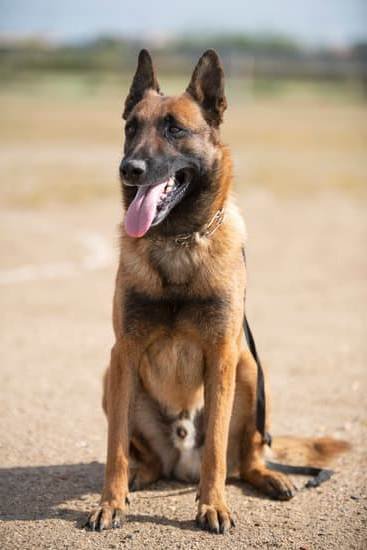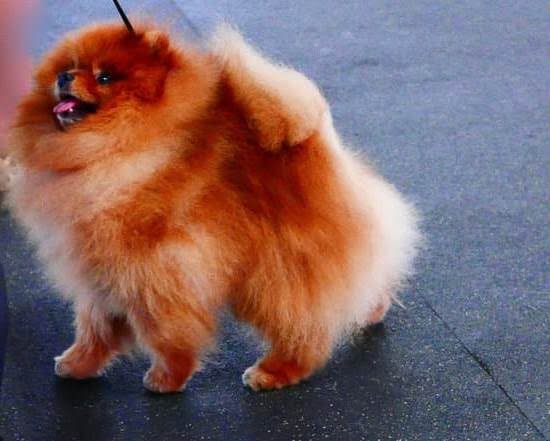Training a senior dog to pee on a pad can be a challenging task, especially if they are used to going outside. However, with the right approach and understanding of their needs, it is possible to successfully train them for indoor peeing. This article will provide you with valuable insights and tips on how to effectively train your senior dog to use a pee pad.
As your furry friend ages, they may face mobility issues and health concerns that can make outdoor bathroom breaks more difficult. Understanding these challenges is crucial in order to tailor the training process to best suit your senior dog’s needs. From assessing their health and mobility to choosing the right pad and establishing a consistent routine, there are various factors to consider when embarking on this training journey.
In this article, we will delve into the strategies for successful pee pad training for senior dogs, including using positive reinforcement, dealing with accidents, and adjusting the approach based on specific breed traits and personalities. Additionally, we will explore techniques for gradually transitioning your senior dog from outdoor to indoor pee pad use, as well as providing tips for maintaining successful training as they continue to age.
Let’s begin by examining the unique challenges of training a senior dog to pee on a pad.
Assessing Your Senior Dog’s Health and Mobility for Successful Training
As senior dogs age, they may experience health issues and reduced mobility that can make it challenging to train them to pee on a pad. It’s important to assess your senior dog’s health and mobility before beginning the training process to set realistic expectations and ensure their comfort throughout the process.
When assessing your senior dog’s health, consider any chronic conditions they may have, such as arthritis or incontinence, that could affect their ability to use a pee pad. Additionally, it’s crucial to take note of any medications they are taking that may increase their frequency of urination.
As part of the assessment, observe your senior dog’s mobility levels. Are they able to easily walk or move around without discomfort? If your senior dog has difficulty getting up or walking long distances, you may need to make accommodations for them to access the pee pad more easily.
To successfully train a senior dog to pee on a pad, here are some considerations:
- Consult with your veterinarian about any health concerns or limitations that may impact the training process.
- Make adjustments to the placement of the pee pad based on your senior dog’s mobility, ensuring easy access for them.
- Consider using larger or more absorbent pads for senior dogs who may have less control over their bladder.
By carefully assessing your senior dog’s health and mobility, you can tailor the pee pad training process to meet their specific needs and set them up for success.
Choosing the Right Pad and Placement for Your Senior Dog
As your senior dog transitions to indoor pee pad use, it’s crucial to select the right type of pad and find the best placement for it in your home. Here are some important factors to consider when making these decisions.
Choosing the Right Pee Pad
When choosing a pee pad for your senior dog, consider factors such as absorbency, size, and odor control. Look for pads that are specifically designed for senior dogs, as they may offer additional features such as attractant pheromones that can help encourage your dog to use the pad.
It’s also essential to select a pad that is large enough to accommodate your senior dog’s size and potential accidents. Some pads come with adhesive strips to secure them in place, which can be beneficial in preventing shifting and messes.
Placement of the Pee Pad
The placement of the pee pad is another crucial aspect of successful training. Choose a location that is easily accessible to your senior dog, especially if mobility or joint issues are a concern. Consider placing multiple pads in different areas of your home, particularly if your senior dog has difficulty getting around.
Additionally, it’s important to choose a spot that is away from your dog’s eating and sleeping areas. Dogs generally prefer not to eliminate near their food or bed, so placing the pad at a distance from these areas can help reinforce good bathroom habits.
Overall, by carefully considering both the type of pad and its placement in your home, you can set up an environment that will support successful indoor pee pad training for your senior dog. Remember that patience and consistency are key as you navigate this transition period with your aging furry companion.
Establishing a Consistent Routine for Your Senior Dog’s Pee Pad Training
Training a senior dog to pee on a pad can be a challenging task, but with the right approach and consistency, it is definitely possible. One of the key elements in successful pee pad training for senior dogs is establishing a consistent routine. Just like with puppies, senior dogs thrive on routine and predictability, so having a set schedule for their pee pad use will greatly aid in the training process.
To start, choose specific times throughout the day when you will take your senior dog to the pee pad. This could be first thing in the morning, after meals, before bedtime, and other times that align with your dog’s natural elimination patterns. By setting these designated times, your senior dog will begin to form a habit and expectation around when it’s time to use the pee pad.
Consistency also extends to the location of the pee pad. Once you’ve chosen an appropriate spot in your home for the pad, stick to it. Avoid moving the pad around as this can confuse your senior dog and make it harder for them to understand where they are supposed to go. With time and repetition, your dog will become familiar with the routine and their behavior will adjust accordingly.
| Key Element | Description |
|---|---|
| Scheduled Times for Pad Use | Set specific times during the day for your senior dog to use the pee pad. |
| Consistent Placement | Choose one spot in your home for the pee pad and keep it there consistently. |
Using Positive Reinforcement and Encouragement During the Training Process
Senior dogs may pose a particular challenge when it comes to pee pad training, especially if they have been used to going outside for most of their lives. However, with the right approach and plenty of patience, it is possible to train a senior dog to pee on a pad indoors. One crucial aspect of this training process is the use of positive reinforcement and encouragement.
First and foremost, it’s important to understand that senior dogs may take longer to learn new behaviors compared to younger dogs. This means that consistency and positive reinforcement are key. When your senior dog successfully uses the pee pad, be sure to praise them and offer a treat as a reward. This will help them associate using the pad with positive feelings.
Another way to encourage your senior dog during the training process is by utilizing verbal cues and physical gestures. For example, you can use phrases such as “go potty” whenever you bring your senior dog to the pee pad area. Over time, they will come to recognize this cue and understand what is expected of them.
It’s also important to be patient and understanding if accidents occur during the training period. Senior dogs may have health issues or mobility issues that affect their ability to reach the pee pad in time. In these cases, getting upset or scolding your dog will only create negative associations with the training process. Instead, gently clean up any accidents and continue with the training routine.
| Aspect | Recommendation |
|---|---|
| Consistency | Reward consistently when your senior dog successfully uses the pee pad |
| Verbal cues | Use consistent phrases and gestures to reinforce where your senior dog should go |
| Patience | Be patient and understanding if accidents occur during training |
Dealing With Accidents and Setbacks During the Training Period
Training a senior dog to pee on a pad can come with its challenges, including dealing with accidents and setbacks during the training period. It’s important to be patient and understanding as you navigate this process with your furry friend. Here are some tips for handling accidents and setbacks:
1. Stay calm and patient: Accidents happen, especially with senior dogs who may have limited mobility or health issues. It’s important to remain calm and patient when accidents occur. Avoid scolding or punishing your senior dog, as this can create anxiety and hinder the training process.
2. Clean up accident areas promptly: When accidents happen, it’s essential to clean up the mess promptly and thoroughly. Use an enzymatic cleaner specifically designed for pet accidents to eliminate any lingering odor that may attract your senior dog back to the same spot.
3. Reassess the training approach: If you notice that your senior dog is consistently having accidents in a specific area or at certain times of the day, it may be necessary to reassess your training approach. Consider adjusting the placement of the pee pad, modifying the schedule for potty breaks, or providing additional positive reinforcement during training sessions.
4. Monitor your senior dog’s health: Sometimes accidents can be a sign of underlying health issues in senior dogs, such as urinary incontinence or other medical conditions. If you notice a sudden increase in accidents or changes in your dog’s bathroom habits, it’s essential to consult with your veterinarian to rule out any potential health concerns.
5. Stay consistent: Consistency is key when training a senior dog to pee on a pad. Stick to a regular schedule for potty breaks, offer plenty of praise and rewards for successful potty behavior, and remain vigilant in monitoring your dog’s progress.
By implementing these strategies and remaining patient and consistent, you can effectively navigate through setbacks and accidents during the pee pad training process with your senior dog.
Adjusting the Training Approach for Specific Senior Dog Breeds and Personalities
When it comes to training a senior dog to pee on a pad, it’s important to understand that different breeds and personalities may require unique approaches. Certain breeds may have specific traits or tendencies that affect their training, while individual personalities can also play a significant role in the process. Understanding these differences is essential for effectively training your senior dog.
For example, small breed dogs may have smaller bladders and a higher frequency of needing to urinate. This means that they may require more frequent opportunities to use the pee pad compared to larger breeds. Additionally, some breeds are more independent and less eager to please, which can impact their motivation during training. On the other hand, some senior dogs may have developed specific habits or routines over the years, which can influence their receptiveness to pee pad training.
When adjusting the training approach for specific senior dog breeds and personalities, it’s crucial to tailor the training method to suit their individual needs. This may involve being patient with certain breeds that are known to be stubborn or providing extra encouragement for shy or anxious dogs. It’s also essential to take into account any physical limitations or health issues that may affect your senior dog’s ability to access the pee pad consistently.
Overall, understanding your senior dog’s breed characteristics and unique personality traits will allow you to customize the training approach in a way that maximizes success. By recognizing and accommodating these differences, you can create a tailored training plan that best suits your senior dog’s needs and increases the likelihood of successful pee pad training.
By utilizing an approach that is specifically designed for your senior dog’s breed and personality traits, you can ensure a more effective and efficient pee pad training process.
Gradually Transitioning Your Senior Dog From Outdoor to Indoor Pee Pad Use
As your senior dog becomes more accustomed to using the pee pad indoors, it may be time to gradually transition them from outdoor to indoor use. This process requires patience and consistency to ensure a successful transition.
Start With Indoor Pee Pad Placement
Begin by moving the outdoor pee pad closer to the door leading inside, and eventually placing it just inside the door. This will help your senior dog make the connection that they should use the indoor pad instead of going outside. Be sure to praise and reward them for using the indoor pad to reinforce this new behavior.
Monitor Your Senior Dog’s Behavior
Keep a close eye on your senior dog’s behavior during this transition period. Watch for any signs that they need to go outside, such as circling or sniffing around. If you notice these behaviors, gently guide them towards the indoor pee pad and encourage them to use it.
Gradually Decrease Outdoor Access
As your senior dog becomes more comfortable using the indoor pee pad, gradually decrease their access to the outdoors. This can be done by reducing the frequency and duration of outdoor potty breaks, while continuing to encourage and reward them for using the indoor pad.
By following these steps and being patient with your senior dog, you can successfully transition them from outdoor to indoor pee pad use. Remember that every dog is different, so it’s important to adjust your training approach based on your senior dog’s specific needs and progress. With consistency and positive reinforcement, you can help your senior dog maintain successful pee pad training as they age.
Tips for Maintaining Successful Pee Pad Training as Your Senior Dog Ages
As your senior dog continues to age, maintaining successful pee pad training becomes even more important. It is essential to take into account their changing health and mobility needs, as well as any potential cognitive decline that may affect their ability to remember their training. Here are some tips for ensuring that your senior dog continues to use the pee pad effectively:
First and foremost, it is crucial to stay attuned to your senior dog’s health and make any necessary adjustments to their training routine. Regular visits to the vet can help you stay on top of any medical issues that may impact their ability to use the pee pad consistently. Additionally, be mindful of any signs of cognitive decline, as this may require a shift in your training approach.
Consistency is key when it comes to maintaining successful pee pad training for senior dogs. This means sticking to a regular schedule for potty breaks and reinforcing positive behavior with treats and praise. Keep an eye out for any changes in your dog’s routine or behavior that may signal a need for adjustments in their training regimen.
Lastly, don’t be discouraged by setbacks or accidents during the training process. It’s natural for senior dogs to experience occasional slip-ups, especially as they age. Stay patient and continue using positive reinforcement techniques to encourage them to use the pee pad effectively.
In conclusion, maintaining successful pee pad training for your senior dog requires patience, consistency, and attentiveness to their evolving needs. By taking into account their health, mobility, and cognitive abilities, you can ensure that they continue to use the pee pad reliably throughout their golden years. With the right approach, you can help your senior dog maintain good potty habits and enjoy a comfortable and happy quality of life.
Frequently Asked Questions
Can You Train an Older Dog to Use Pee Pads?
Yes, you can train an older dog to use pee pads. It may take more time and patience than training a puppy, but with positive reinforcement and consistency, older dogs can learn to use pee pads effectively.
How Do I Attract My Dog to Pee Pad?
To attract your dog to pee pad, you can start by placing the pad in an easily accessible area. Use verbal cues and treats to encourage your dog to approach the pad and praise them when they do so. You can also consider using a specific scent to attract your dog towards the pee pad.
Why Won’t My Dog Pee on the Pad Anymore?
There could be several reasons why your dog won’t pee on the pad anymore. It’s possible that the pad is not clean enough for them, or they may have developed a preference for eliminating in another location.
Another reason could be stress or anxiety, as dogs may refuse to use the pad due to changes in their routine or environment.

Welcome to the blog! I am a professional dog trainer and have been working with dogs for many years. In this blog, I will be discussing various topics related to dog training, including tips, tricks, and advice. I hope you find this information helpful and informative. Thanks for reading!





